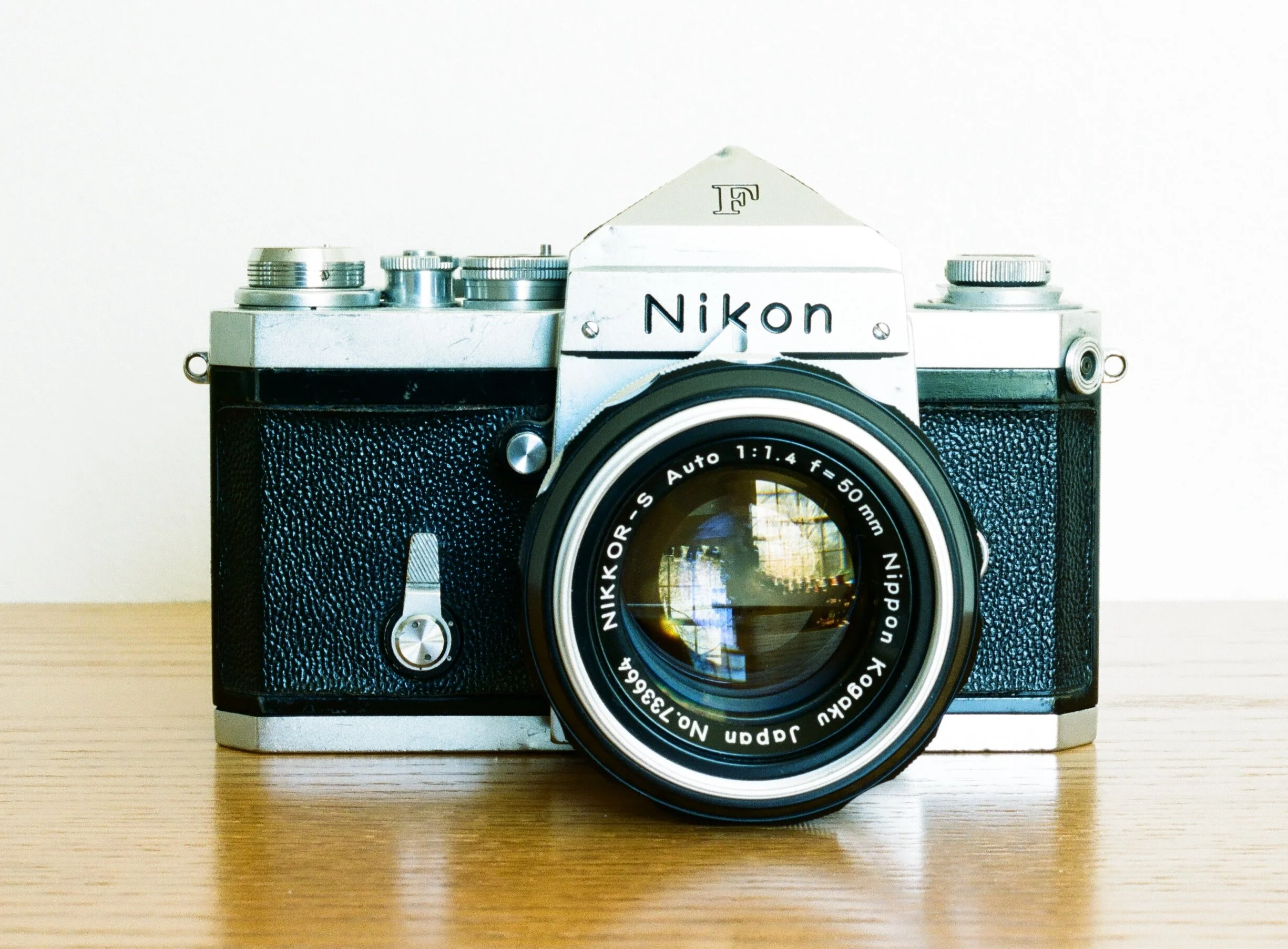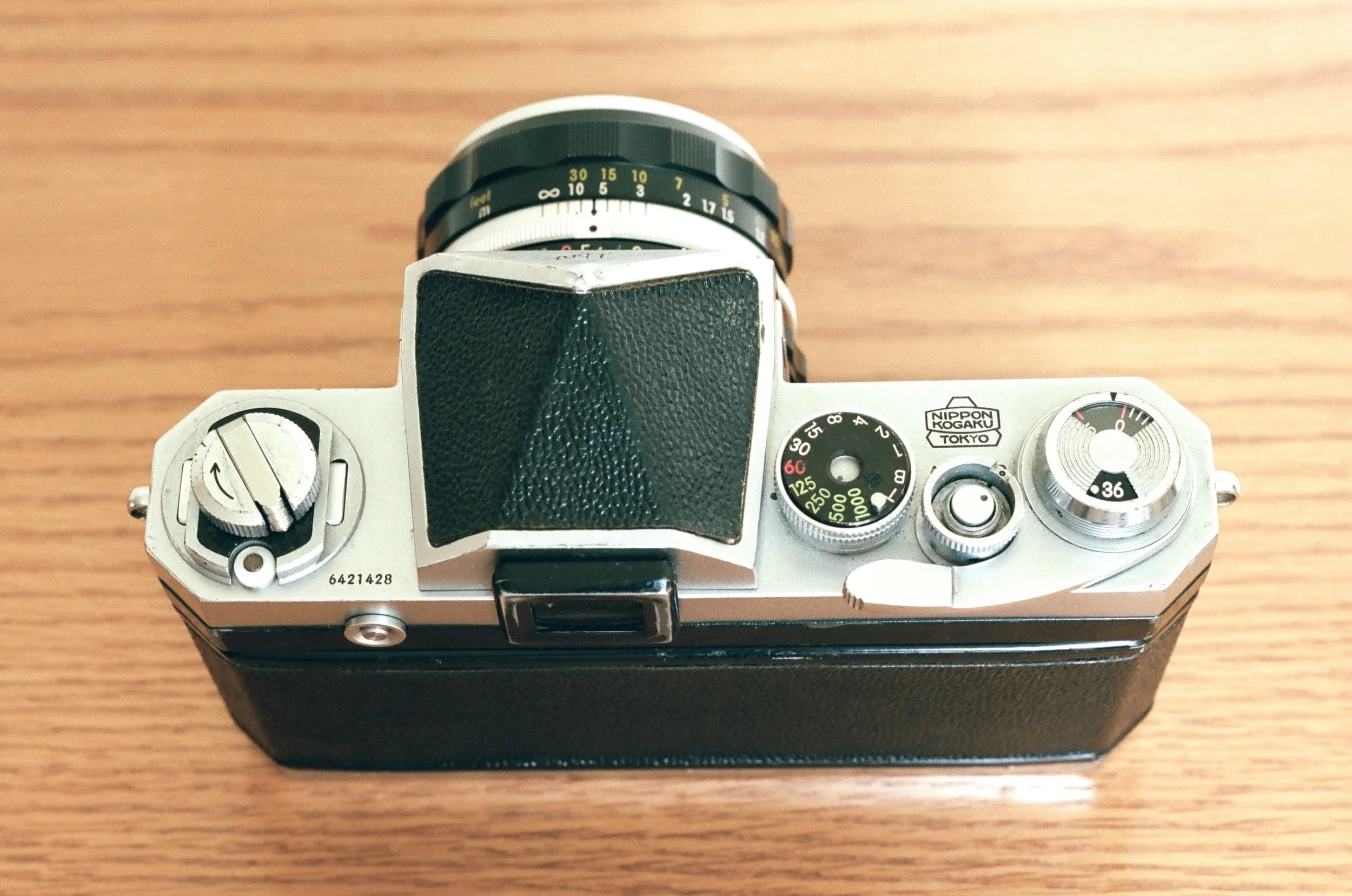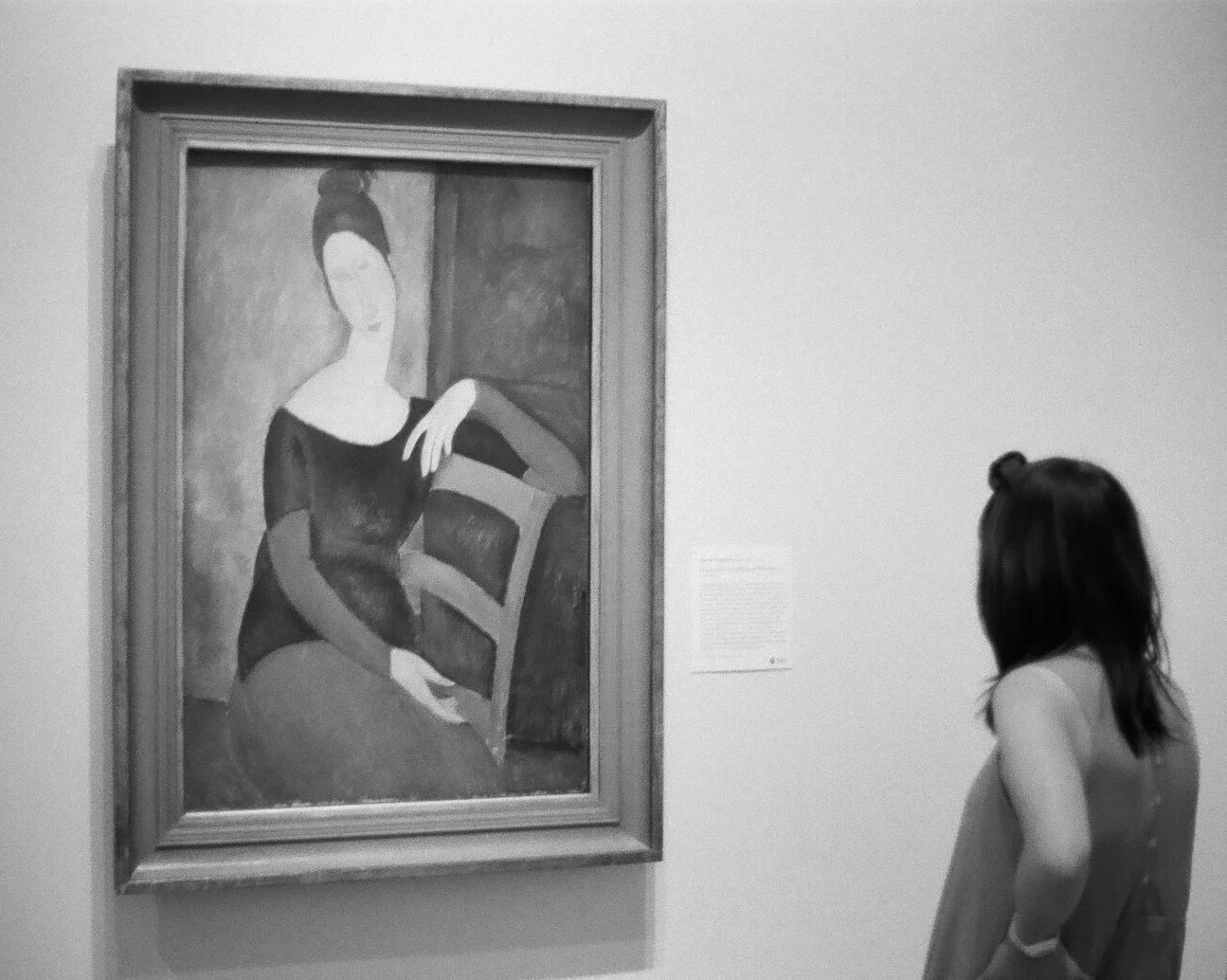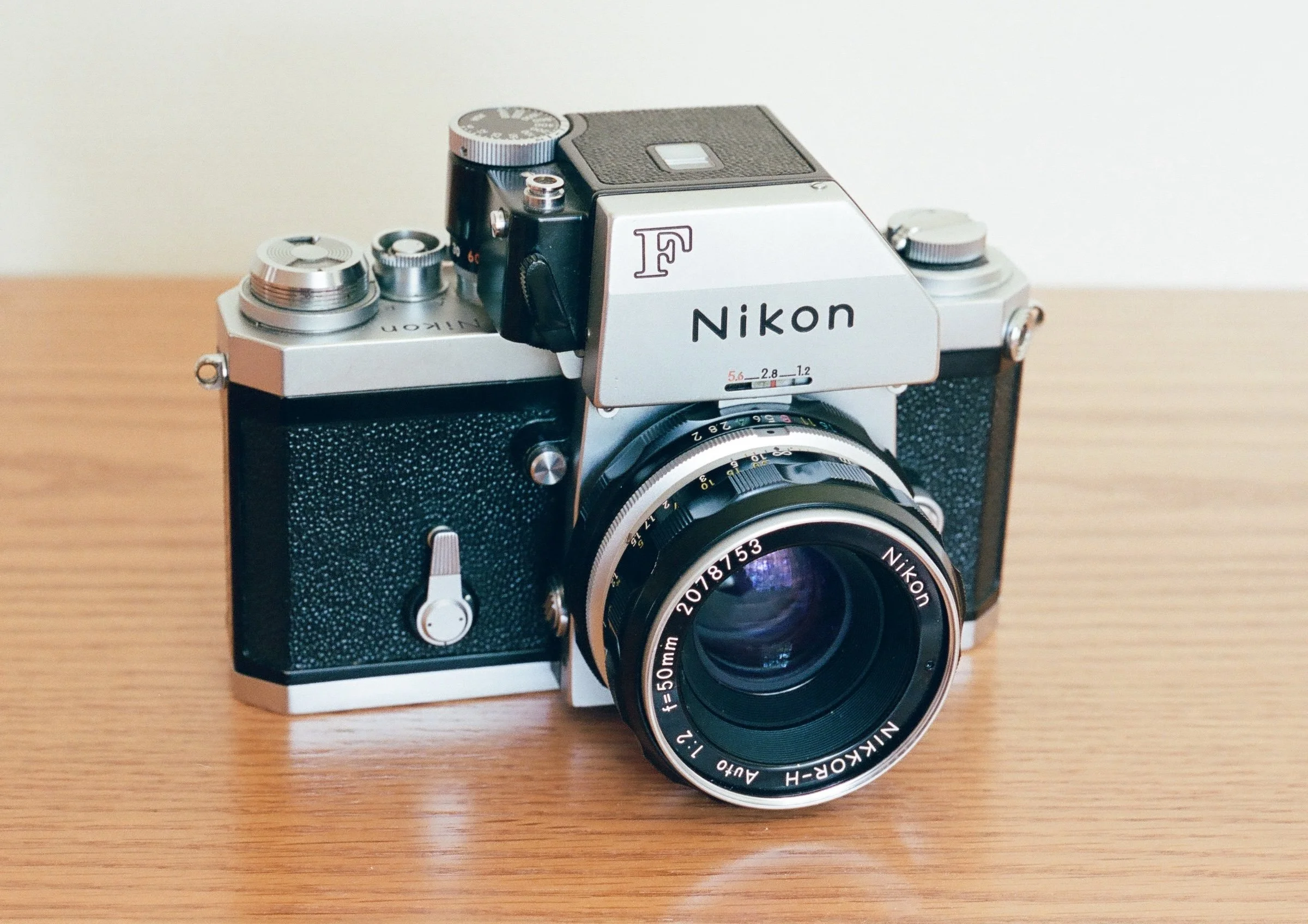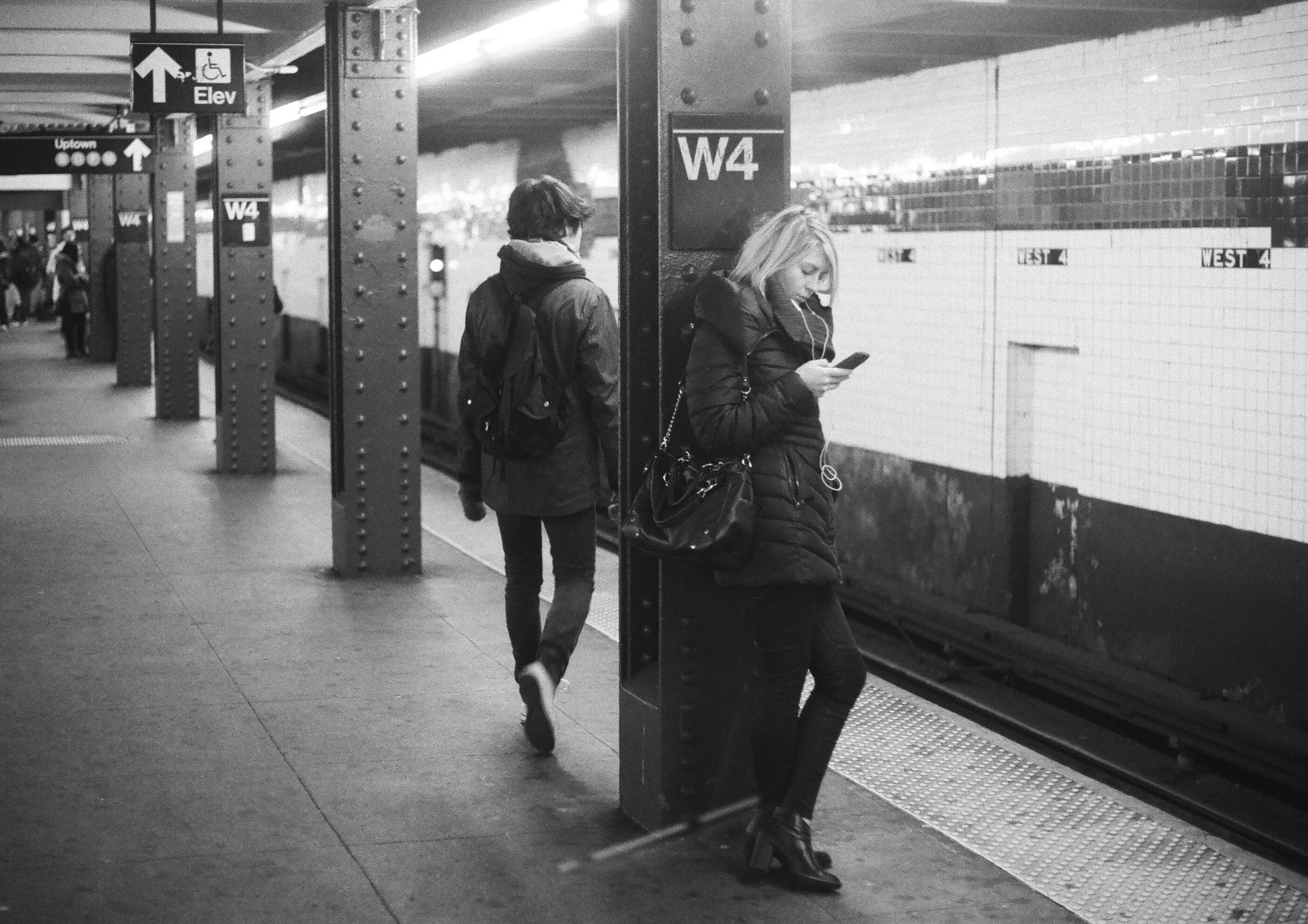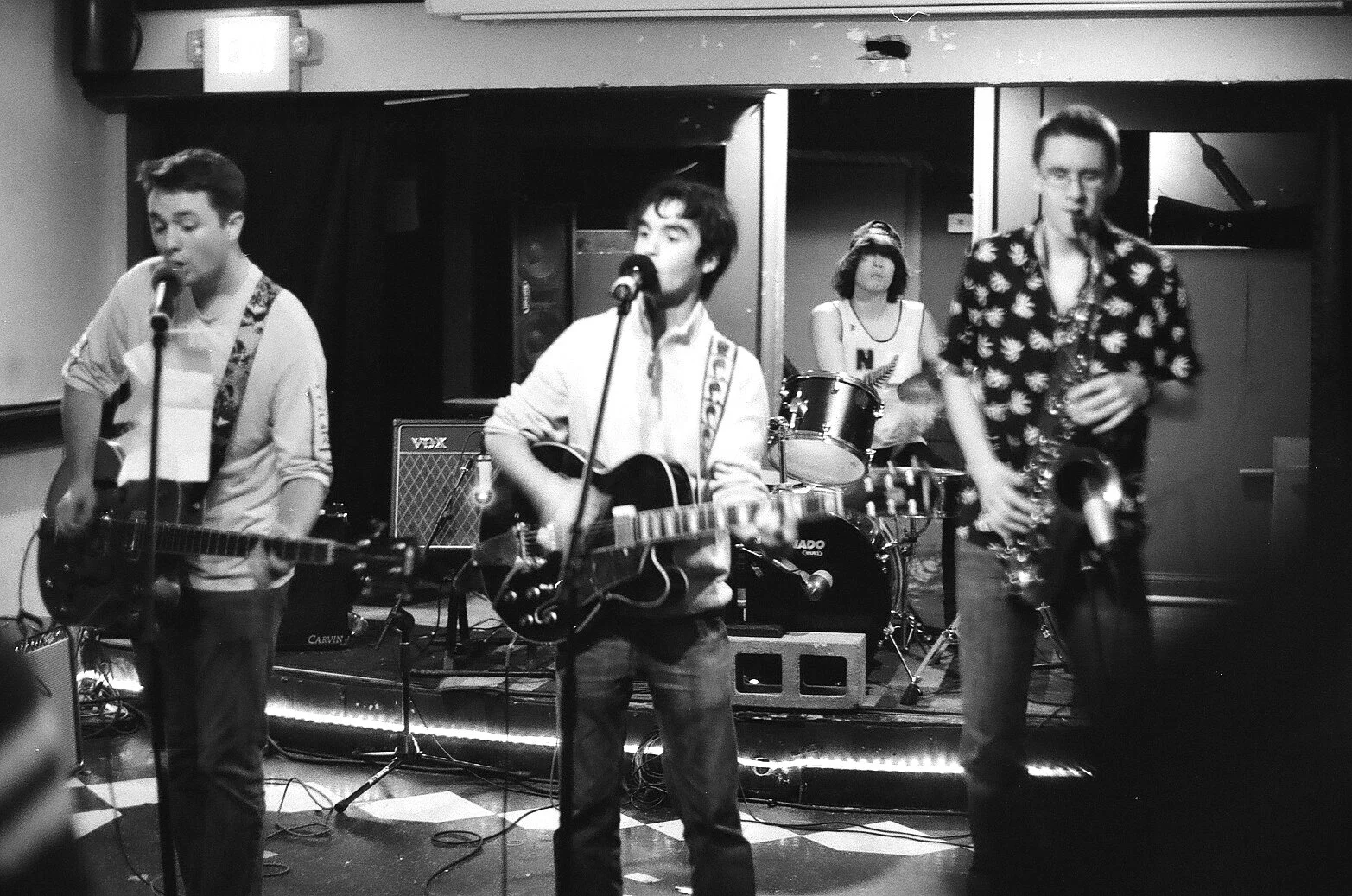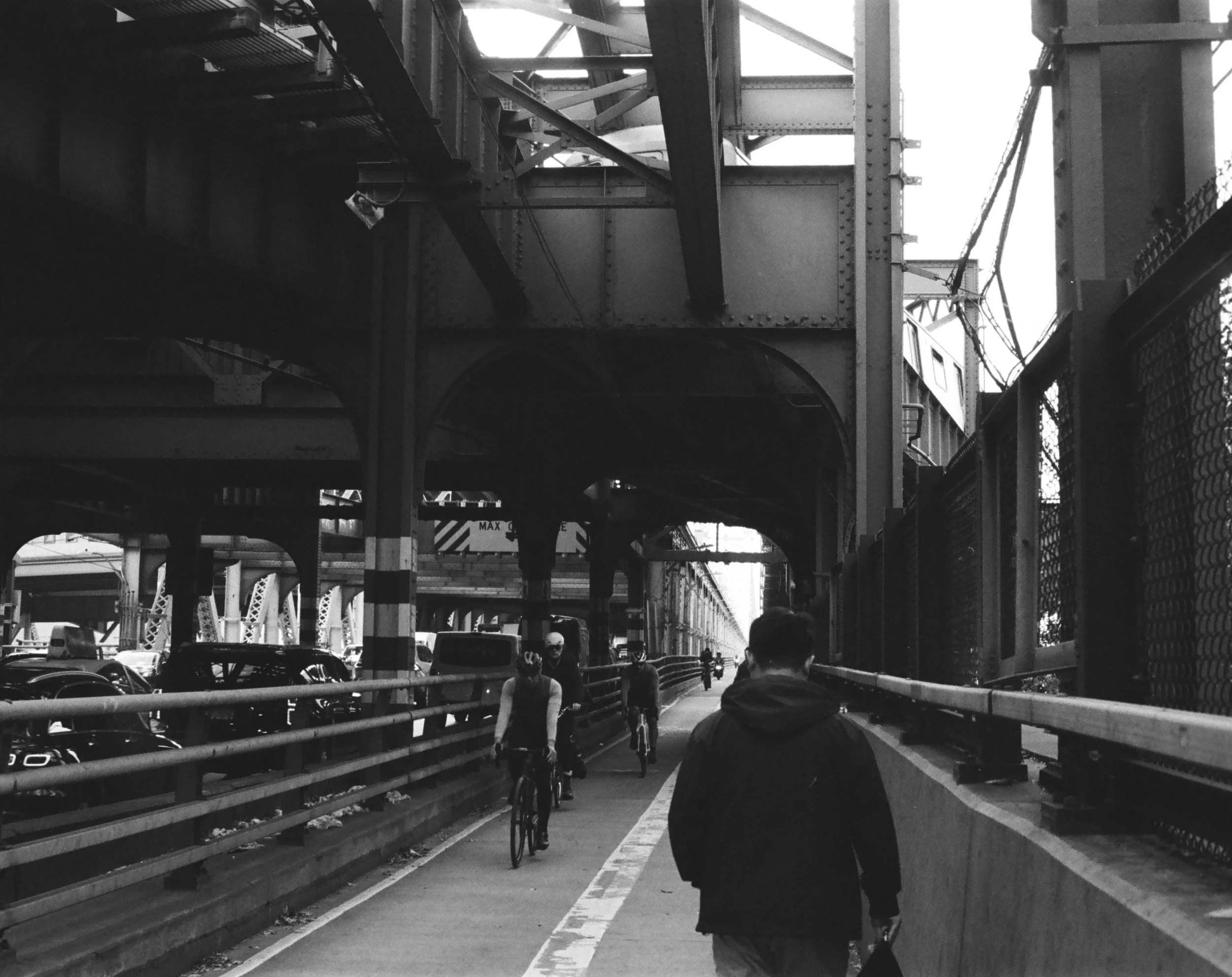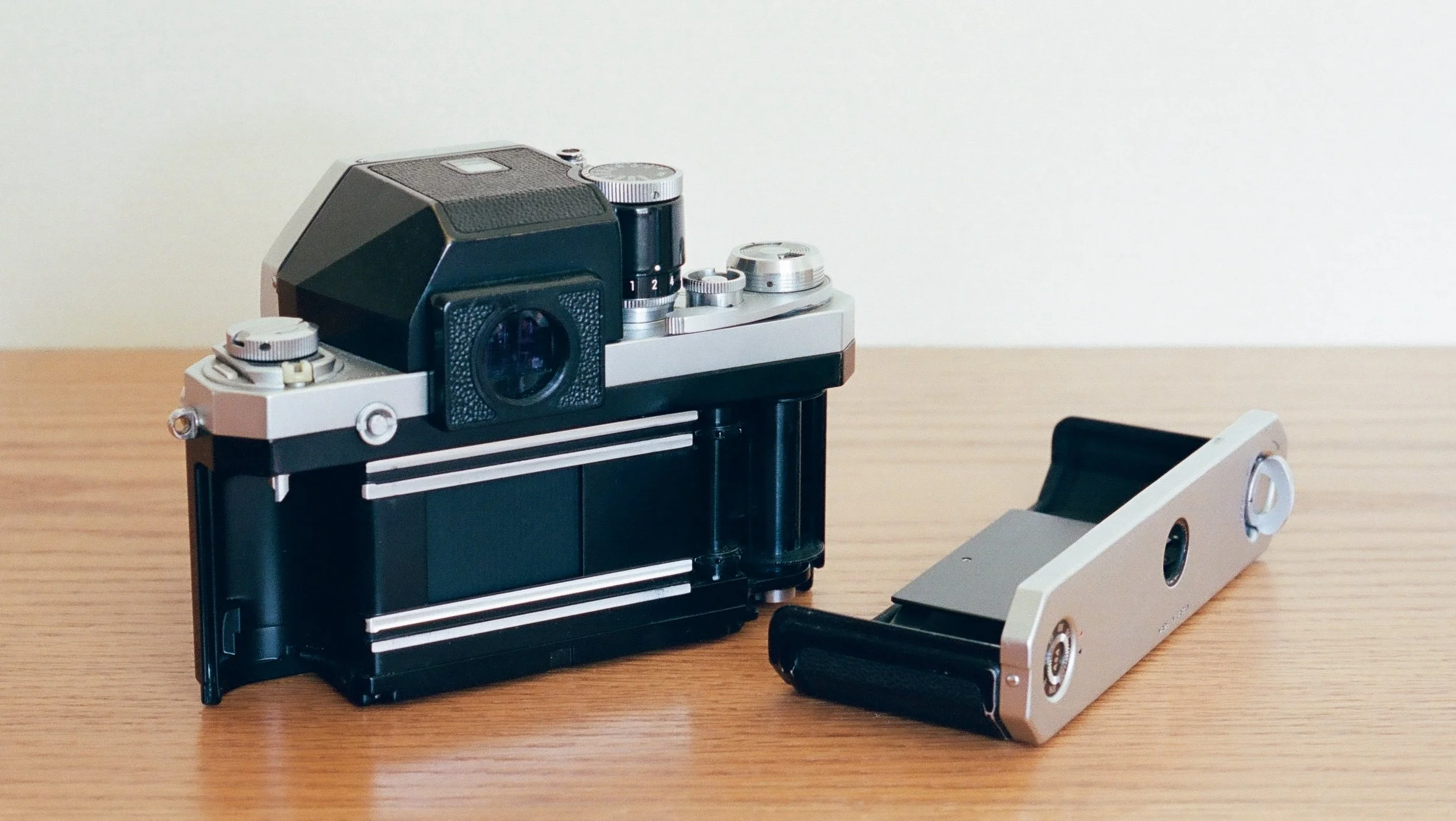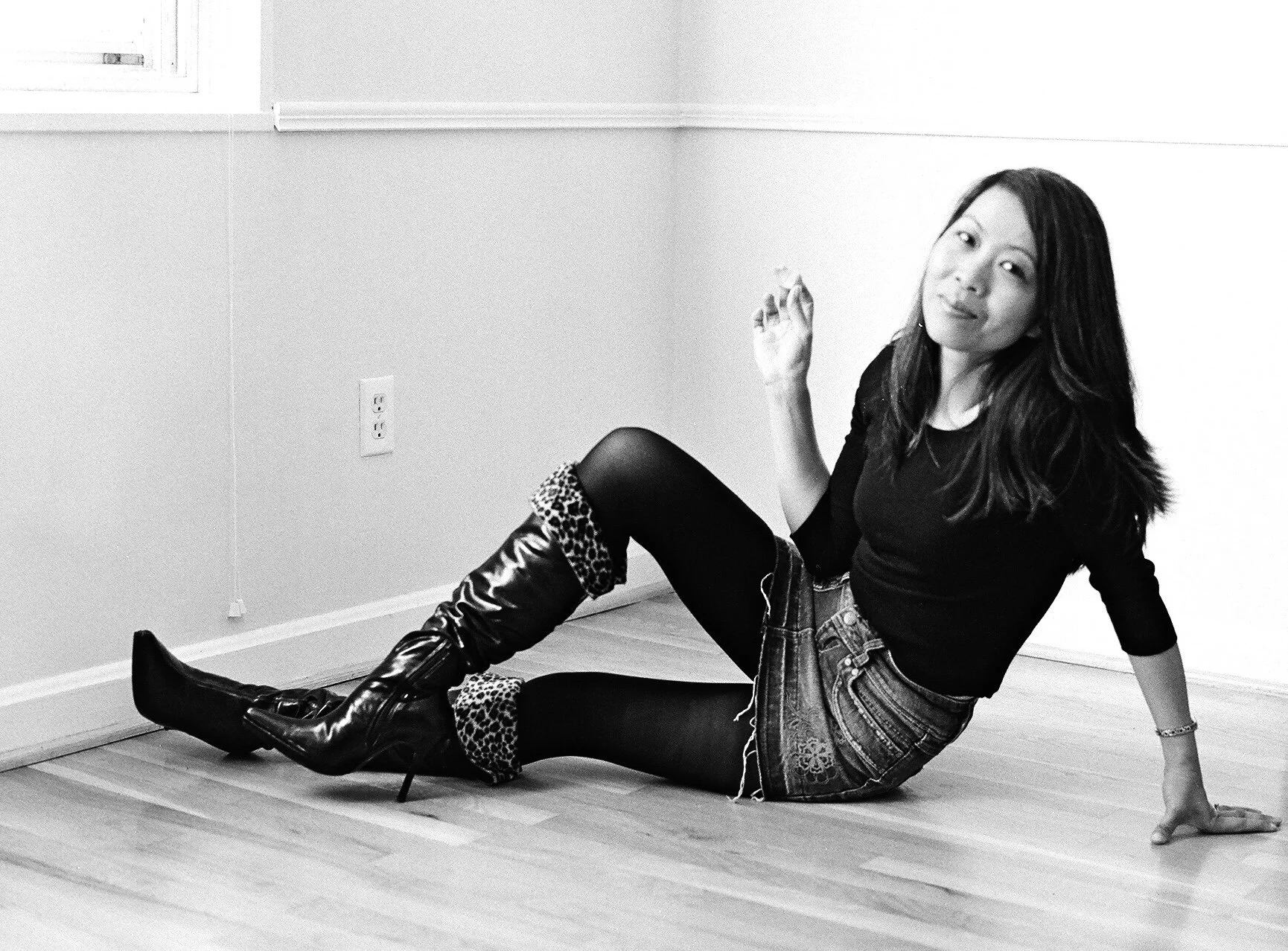Nikon F
Japan’s first major industrial product recognized as best in class.
Nikon F. An early example, made in 1960, with a plain (non-metering) prism. (Color photos of the camera were made with a Nikon F, 55mm f/3.5 Micro-Nikkor-P.C, and Portra 400.)
Guggenheim Museum, New York Nikon F, 35mm f/2 Nikkor-O, HP5+, 2023.
Japan as Number One
The Nikon F made Japan the world’s leader in 35mm cameras. And the Nikon F is not just a historical artifact. I’m a user, not a collector and the Nikon F is arguably the #1 best 35mm user camera out there.
1960 Nikon F with plain prism.
Angkor Wat, Cambodia Nikon F, 50mm f/1.4 Nikkor-S, Plus-X, 2000.
Design
The Nikon F is an all-mechanical, manual camera. The prism is modular and can be swapped out as quickly as changing a lens. Different prisms with and without meters, and a waist level finder, were manufactured during the Nikon F’s long production run.
There was even, reportedly, an attachment to enable the Nikon F to use 4x5 sheet film (see Nikon F Speed Magny in References).
The body has no provision for a battery and this is a good design feature. When a metering prism is fitted, the battery is on board the prism. I leave it out, preferring to use a hand-held meter or the sunny 16 rule.
Norton Simon Museum, Pasadena, Calif. Nikon F, 50mm f/1.4 Nikkor-S.C, HP5+, 2015.
Style
The Nikon F with the plain prism is an elegant evolution of the preceding Nikon rangefinder. But when fitted with one of the ungainly Photomic metering prisms, the camera has tremendous presence. It can literally be recognized (and admired) from across the street.
Nikon F. Made in 1969. A Photomic FTn metering prism is fitted. This was the last version of the Nikon F’s metering prism.
The origin story: Nippon Kogaku
The nameplate in the photo above indicates that the Nikon F was the product of Nippon Kogaku of Tokyo. In 1988 the company’s name was changed to Nikon Corporation.
As Long (2018) explains, Nippon Kogaku was founded in 1917. In 1932 the Nikkor brand name was trademarked for their line of lenses. By the late 1930s the company was Japan’s leading supplier of optical equipment, much of it for the military. Products included aircraft gun sights and rangefinders for warships. In the mid- to late-1930s Nippon Kogaku also supplied rangefinders and Nikkor lenses for the new Canon camera.
During World War II, one of Nippon Kogagu’s specialties was rangefinders for warships, including the battleship Yamato. Japanese defense contracting was lucrative and by 1944 the company was making record profits. But in 1945 Japanese military spending came to a halt at which point a new civilian business base was needed. Nippon Kogaku started developing a 35mm camera.
(Sources: Alexander, 2002, Long, 2018 and Nikon Corp.)
Quincy Market, Boston Nikon F, 50mm f/1.4 Nikkor S.C, HP5+, 2022. The camera was pointing almost directly into the sun.
1950s: Rangefinder cameras were the 35mm standard
In the 1950s, professional 35mm photographers and dedicated amateurs used rangefinder cameras. Leica was the leader, the Zeiss Ikon Contax was a contender, and Nippon Kogaku’s Nikon along with the Canon and some others were capable lower-priced alternatives.
The SLR was not a new idea
At that time (1950s), SLRs had been in use for several decades. The Graflex SLR was a standard pro tool from the early 1900s through the 1940s. Graflexes made some of the most famous photographs of the first half of the 20th century but they were large and unwieldy.
The Hasselblad 500C introduced in 1957 was a much handier SLR, but it was a medium format camera, still not as quick-acting as a Leica or Contax.
The first 35mm SLR in regular production was the Kine Exacta of 1936 from Ihagee of Dresden, which ended up in East Germany after the war. 35mm SLRs were developed in the post-war era in several countries, but none caught on (Matanle, 1996). Compared to rangefinder cameras, they were clunky and slow-acting.
Nikon F. This one was made in 1963 and a late version of the non-through-the-lens Photomic metering prism is fitted.
1963 Nikon F with Photomic prism.
1959: Nikon F eclipses Leica M3
Nippon Kogaku saw the time was ripe for a professional-grade 35mm SLR to revolutionize the industry. They made the big push. The Nikon design team didn’t have to do a completely original clean-sheet design, they were able to carry over many design elements from their rangefinder cameras:
‘…in the development of SLR cameras, we planned to adopt the same body mechanism as in the SP/S3 as a rule (without any change made to the layout and geometry of the shutter button, film wind-up lever and other components), except for the viewfinder and other parts essential for SLR cameras, with the intent to implement parallel production with SP and the basic model S3’.
The new Nikon F debuted in 1959. It was a heavily-built camera with a 100 percent viewfinder, auto diaphragm, bayonet lens mount, instant return mirror, mirror lockup, interchangeable finders, interchangeable focus screens, and a large selection of first-class lenses available at introduction (Long, 2018).
That was an unprecedented set of super-useful key performance parameters. The Nikon F set a new paradigm. It outclassed the previously-leading Leica M3 and outsold it even though it was equally expensive (Matanle, 1996).
Bethesda, Md. Nikon F, 50mm f/1.4 Nikkor-S, Delta 100, 2010.
The first aspirational product to come from a Japanese factory
1950s and 1960s Japanese industrial products (including automobiles) sold on price — they were low-cost alternatives. ‘Made in Japan’ did not confer prestige.
The Nikon F changed that.
It was arguably the first high-profile product of Japan’s industrial base to achieve universal recognition as the global best in class. It made Nikon a premium brand all over the world, at a time when Toyota and Honda were nearly unknown outside their home market.
West 4th St. station, New York Nikon F, 50mm f/1.4 Nikkor-S, Tri-X, mid-2010s.
A key type of innovation
Like Henry Ford’s Model T, the Nikon F was a creative development of a pre-existing idea; an inspired realization of hidden potential that had previously been captured only to a limited and incomplete extent.
The Nikon F was a virtuoso performance in engineering innovation; an example of a type of innovative ability that has, throughout history, built new industries and been a major determinant of business competitiveness and national economic strength.
U.S. Bank Tower, Los Angeles Nikon F, 50mm f/1.4 Nikkor-S, Tri-X, 2017.
A long production run
The Nikon F dominated 35mm professional photography from 1959 to 1971, when the F2 appeared. But the F was so popular, it was kept in production until May 1974 (Pritchard, 2014:162).
The Nikon F’s long production run was remarkable because it took place at a time of rapid innovation, with fierce competition among Japanese SLR makers who were continually bringing out new models.
The Nikon F stayed in front for several reasons including: (1) its original design was ahead to start with, (2) a lot of the tech development was in metering, and the Nikon F’s metering was built into the modular prisms, (3) it had a huge array of lenses and other accessories, and (4) strong marketing.
Occasionally George at the Pinch (Washington, D.C.) Nikon F, 50mm f/1.4 Nikkor-S.C, Delta 400, 2017.
The Nikon F becomes part of the culture
The Nikon F became part of the camera culture and beyond. It was featured in a number of films made in, or set in, the 1960s. For example, the main character in Michelangelo Antonioni's 1966 film Blow-Up is a fashion photographer in swinging London who uses a Nikon F and a Hasselblad.
In a drastically different use case, photojournalists in Vietnam in the 1960s and early 1970s put lots of film through this camera. That proved the Nikon F’s reliability in ultra harsh conditions. It became part of the iconography of the war and was later featured in Stanley Kubrick’s Full Metal Jacket (1987) and Francis Ford Coppola’s Apocalypse Now (1979).
Queensboro Bridge, New York Nikon F, 50mm f/2 Nikkor-H, Tri-X, 2024.
The Nikon F in use
The Nikon F handles great. It has a big, bright viewfinder. Focus screens are modular and can be changed out, although i have never done that as the standard screen has split-image focus which is perfect for me — it’s quick and accurate. Not all classic Japanese SLRs include this really useful feature.
I like the removing back (in lieu of the more common hinged door) because it is a metal-to-metal fit which is strong and maintenance-free.
Nikon F with the back removed for film loading
Prisms: plain, or metered?
The bulky Photomic prisms with light meters, have a lot of style. On the other hand, the plain prism is smaller and lighter. And since there’s no meter, lens changes are quicker as there’s no need to engage the lens ‘rabbit ears’ to index the lens to the meter.
Bethesda Terrace Central Park, New York Nikon F, 35mm f/2 Nikkor-O, Tri-X, 2023.
Head of the Charles Regatta (Cambridge, Mass.) From Weeks Bridge. Nikon F, 50mm f/1.4 Nikkor-S, HP5+, 2021.
My overall two favorite 35mm cameras: the Nikon F and the screw mount Leica
The 35mm cameras that I most often use are Nikon Fs and screw-mount Leicas. Which is best, depends on the use case. Some of the operational pros and cons of each:
The Leica is smaller and lighter. This is an important advantage for on-location photography.
The Leica’s shutter is quieter and because it’s a rangefinder camera, there’s no mirror-induced vibration.
Composition is quicker and more precise with the Nikon F. The viewfinder of the screw-mount Leica is tiny. That makes framing more difficult, leading to more cropping when making prints. The alternative is to use an accessory viewfinder.
The Leica’s rangefinder is less distinct even when in top condition. More time is needed for focusing.
A far greater variety of lenses were made for the Nikon F and they are not hard to find in good condition on today’s used market.
Film changing can be done more quickly with the Nikon F.
Bethesda, Md. Nikon F, 50mm f/1.4 Nikkor-S, Tri-X, mid-2000s..
Maintenance and repair
I’ve used Nikon F’s for a long time, all around the world, with no maintenance or repair. They are super robust and dependable.
Closing thought
Japan Camera Hunter (Hunt, 2024, p. 119) put it succinctly: ‘The Nikon F is a masterpiece of design and functionality’
References / further reading
Camera manual: orphancameras.com
More references:
Alexander, J. 2002. ‘Nikon and the sponsorship of Japan’s optical industry by the Imperial Japanese Navy, 1923-1945’. Japanese Studies 22(1),
Gustavson, T. 2011. 500 Cameras: 170 Years of Photographic Innovation. New York: Fall River Press. The 500 cameras are from the George Eastman House Technology Collection, Rochester, N.Y. The Nikon F is on p. 266.
Hillebrand, R. and H.-J. Hauschild. Nikon Compendium: Handbook of the Nikon System. East Sussex, England: Hove.
Hunt, B. 2024. Film Camera Zen: A Guide to Finding the Perfect Film Camera. Los Angeles: Chronicle Chroma.
‘The Nikon F is a masterpiece of design and functionality’ (p. 119). ‘This is the camera that set the trend for SLR cameras. If you are even slightly serious about film cameras, then you should at least try shooting with a Nikon F’ (p. 123).
Long, Brian. 2018. Nikon: A Celebration, 3rd ed. Ramsbury, England: Crowood Press. This includes the early history of the company.
Matanle, I. 1996. Collecting and Using Classic SLRs. New York: Thames and Hudson.
McKeown, J.M. and J.C. 1996. McKeown’s Price Guide to Antique and Classic Cameras, 1997-1998. Grantsburg, Wis.: Centennial Photo.
Nikon Corporation, Camera Chronicle. https://imaging.nikon.com/imaging/information/chronicle/ accessed Aug. 15, 2025. This is Nikon’s in-house camera history and it has:
‘Archives of corporate history subject matter related to Nikon cameras, including rare materials, as well as product photos of cameras and lenses.’
Nikon Corporation. Camera Chronicle: Development of Nikon F. https://imaging.nikon.com/imaging/information/chronicle/history-f/ accessed May 10, 2025.
There’s a wealth of information here, including the ‘philosophy and specifications’ that drove the design of the Nikon F.
Nikon Corporation, Investor Relations. https://www.nikon.com/company/ir/faq/ accessed Nov. 13, 2025. The second ‘faq’ tells the story of the Nikon name:
‘In September 1946, the new compact camera was named "Nikon". This name originated from "NIKKO", the abbreviation of the official company name at the time (Nippon Kogaku K.K.), to which the letter "n" was added to the end…’
Nikon F Speed Magny 1. Brochure: Unique attachments for Nikon F produce large photos with Polaroid and regular film: SPEED MAGNY: 3 1/4 x 4 1/4 — 4x5. https://www.pacificrimcamera.com/rl/00826/00826.pdf accessed Aug. 21, 2025.
“The Speed Magny optical system comprises a magnifying relay lens in combination with a coated field lens and 2 optically ftat, surface-coated mirrors. With Model 100, the system increases the size of the picture 3.2 times to fill the 3 1/4 x 4 1/4 Polaroid format… With Model 45, the increase is 4.1 times… Speed Magny 100 has a built-in holder for Polaroid 3 1/4 x 4 1/4 film packs. Speed Magny 45 accepts standard holders for 4x5 Polaroid and regular sheet film.”
Nikon F Speed Magny 2. Auction listing: Leitz Photographica Auction. Mikami Speed Magny (various) Auction 27, Lot 338. https://www.leitz-auction.com/en/Mikami-Speed-Magny-various/AI-27-32077 accessed Aug. 21, 2025.
“Collection of three rare Speed Magny attachments (1) Speed Magny 45 for Nikon F in near mint condition with maker's box incl. two 4x5" film holders, (2) Speed Magny 100 for Polaroid film for Nikon F and (3) Speed Magny 100 for Polaroid film for Nikon F2 - all in very good condition”
Nelson, Patricia A. 2016. ‘Competition and the politics of war: The global photography industry c. 1910–60’, Journal of War & Culture Studies, 9:2, 115-132, DOI: 10.1080/17526272.2016.1190207
Nelson cites the role played by the U.S. military post exchange (PX) stores in early post-WWII Japan. The PXs expanded the market for high-end Japanese cameras, aiding the growth of Nikon and Canon.
Pritchard, M. 2015. A History of Photography in 50 Cameras. Buffalo, N.Y.: Firefly Books. The Nikon F is camera no. 36.
Roppongi, Tokyo Nikon F, 50mm f/2 Nikkor-H, Tri-X, early 2000s.
